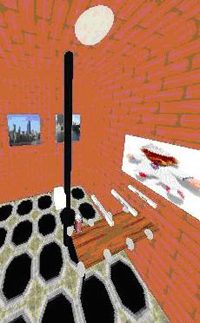Integration of Augmented Reality and Assistive Devices for Post-Stroke Hand Opening Rehabilitation
September 1st, 2005
Categories: Applications, Virtual Medicine

Authors
Luo, X., Kline, T., Fischer, H., Stubblefield, K., Kenyon, R., Kamper, D.About
Impairment of hand function is prevalent among stroke survivors, motivating the search for effective rehabilitation therapy. Recent studies have suggested that for upper extremity functional recovery, repetitive training with virtual reality is helpful. Repetitive training can be facilitated with assistance from mechanical devices. Thus, we have developed a training environment that integrates augmented reality (AR) with assistive devices for post-stroke hand rehabilitation. The AR element of our environment utilizes head mounted display and virtual objects for reach-and-grasp task training. The assistive device consists of either a body-powered orthosis (BPO) or a pneumatic-powered device (PPD), both of which are incorporated into gloves. This environment can be easily set up and calibrated, is customizable for individual users, and requires active user participation. Additionally, it can be used with both real and virtual objects, as desired. We are currently conducting pilot case studies to assess ease of use and efficacy. At present, one stroke survivor from each of the three training conditions, AR-with-BPO, AR-with-PPD and AR-only (acting as the control), has completed the 6-week training paradigm. Preliminary findings suggest user acceptance of the technology and some potential for beneficial effects.
Resources
Citation
Luo, X., Kline, T., Fischer, H., Stubblefield, K., Kenyon, R., Kamper, D., Integration of Augmented Reality and Assistive Devices for Post-Stroke Hand Opening Rehabilitation, Proceedings of the 27th International Conference of the IEEE Engineering in Medicine and Biology Society (EMBC05}, Shangai, China, September 1st, 2005.